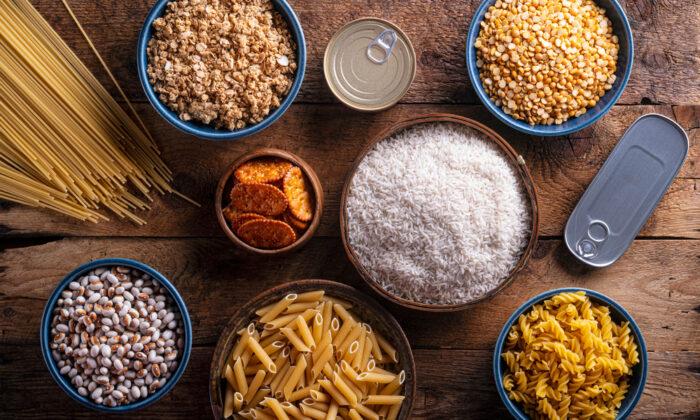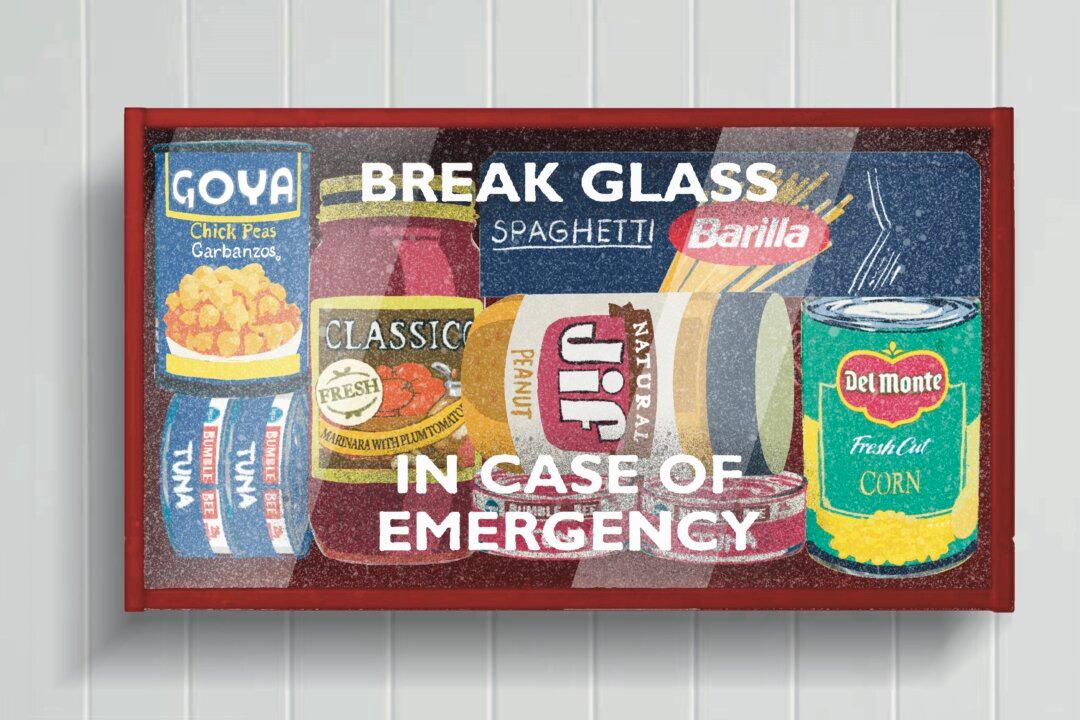Grocery shopping is a chore or a fun adventure, depending on your viewpoint, but rising prices and shortages have added a lot of stress to this unavoidable task. Due to inflation and shortages, millions of Americans are quietly building their own food storage pantries to sustain their families in a time of growing uncertainty. How to do this when households are paying a whopping $460 more per month over last year for basic goods and services is a challenge.
Costs are increasing across the board, but nothing hits home like seeing the price of basics going up by 10 to 30 percent. Eggs are up 33 percent over last year, bread by 10 percent, canned soup by 13 percent, and bacon by 11 percent. A 10-pound bag of white rice from the discount supermarket Aldi is up almost 19 percent since this same time last year.
The Game Plan
A good goal for beginners is one full month’s worth of meals. This time frame gives you a significant margin in case of loss of income or a snafu in the local supply chain due to a natural disaster.Build your food storage pantry around the foods, quantities, and meals typical for your household. If breakfast isn’t part of your routine, then there’s no need to spend money on that extra meal.
Meal Foundations
Simple meals begin with budget-friendly foundations. Think of it this way: Many Italian meals depend on one type of pasta or another as a foundation. Spaghetti, lasagna, and baked rigatoni all include pasta as an essential ingredient. Nearly all Asian dishes include rice as a fundamental. Both pasta and rice can serve the same role as you build your pantry around these basics.Using elbow macaroni and rice as examples of foundations, think of all the ways both can be adapted to dozens of different recipes simply by adding proteins, vegetables, herbs, and spices. You can even transform either of them into desserts when you feel the need for something sweet.
Other foods that fill the role of essential foundations are small pastas, quinoa, barley, farro, beans (dry or canned), egg noodles, ramen noodles, lentils, oats, dehydrated or freeze-dried potatoes, bread, cornbread, and biscuits. You can make versatile breads from scratch, so add those ingredients to your shopping list and food pantry inventory.
Most of these foods continue to be readily available and are some of the most frugal items you can buy. The current price for a 10-pound bag of rice, for instance, is still a good buy at around $5. That’s about 50 cents per 1-cup serving of cooked rice. A 3-pound box of elbow macaroni yields about 18 1-cup servings, and at current prices costs about 15 cents per serving.
It’s hard to beat these prices, especially when you watch for store sales and shop at discount grocery stores and dollar stores.
Choose a few of these foundational ingredients and stock up. Select those that suit your family’s preferences and nutritional needs.

Mix It Up
The next step is to think about tasty additions to these foundational foods and add those ingredients to your shopping list and food storage plan.For example, over a bowl of cooked white rice, you could add canned chili, soup, or beef stew. The same additions would be as tasty over elbow macaroni. Mix up brown or country gravy, either homemade or using a packet of dry mix, and pour it over hot, cooked egg noodles or biscuits along with canned beef. Make veggie burgers from cooked lentils and canned vegetables, or a quinoa skillet dish with seasonings, veggies, and the protein of your choice.
Keeping Track of It All
In raw numbers, you’ll be stocking up on groceries for 31 breakfasts, 31 lunches, and 31 dinners. That’s a lot of food, but for this article, let’s continue to keep it simple!Select four or five foods from the list of foundations, and buy them in bulk. Each week, add something to your emergency food storage, and then keep track of what you buy on a list or spreadsheet. Just one or two boxes of elbow macaroni, a few cans of pinto beans, and a box of Rice-A-Roni each week will add up quickly. Also remember to add two or three foods to complete those meals, such as simmer sauces or canned tuna or chicken.
Shopping Around
At some point, you’ll encounter an empty grocery store shelf where pasta or canned green beans used to be. Between supply chain issues, increased prices for food producers, fewer trained employees, and increasing fuel prices, shortages will continue to be common. This can make stocking your food storage pantry tricky, but if you have a list of the foods you want to have on hand, it’s a matter of regular trips to your favorite stores and adding a few alternative sources.Look in your grocery store’s bulk food section for dry ingredients on your list, especially for less common grains like farro and barley. Track down ethnic grocery stores and grocery outlets such as Food 4 Less and Save A Lot. Dollar stores and restaurant supply stores usually offer lower prices and are grocery sources many people don’t consider. Search for local ranches, farms, farmers markets, and even food co-ops. Finally, food banks can provide very cheap and free food if your finances are tight or nonexistent.
A well-stocked food storage pantry brings peace of mind and is within the reach of anyone willing to plan around the current pesky issues of inflation and shortages.





